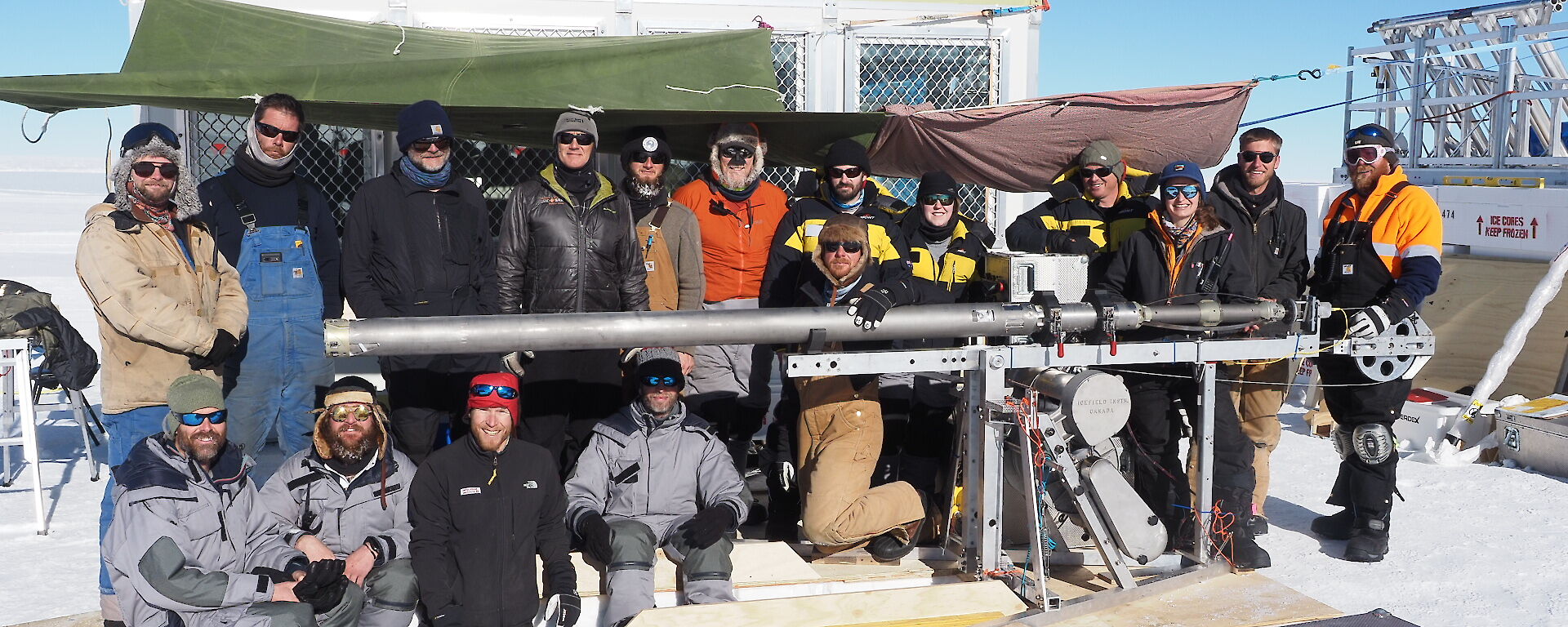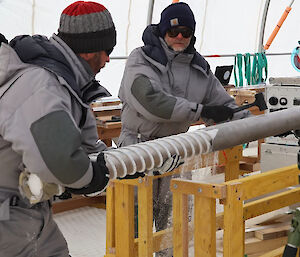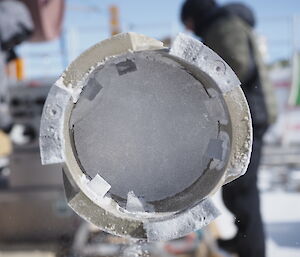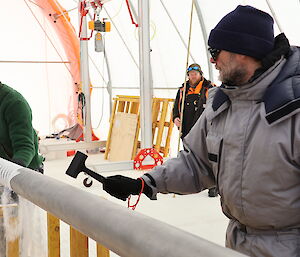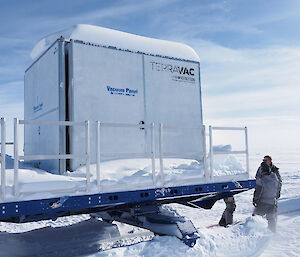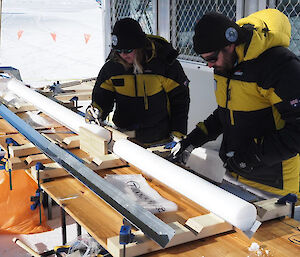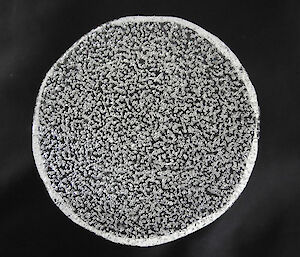This record will help solve a long-standing mystery about the timing of past ice ages – why, almost one million years ago, the cycle between colder glacial and warmer interglacial periods every 41,000 years, changed to every 100,000 years.
Witness to the past
The Antarctic ice cap is formed by layers of snowfall, which are compressed at depth into ice. Trace chemicals and particles trapped in the ice layers provide data on how the climate and atmosphere has changed over time. Past temperature, the frequency and intensity of volcanic eruptions, sea ice extent, dustiness and wind patterns are all recorded.
Air pockets in the snow become trapped as bubbles in the ice. Each bubble is a pristine sample of the atmosphere, from the time the snow was transformed to ice. Carbon dioxide, methane, oxygen and other gasses can be extracted from the bubbles to reveal their past atmospheric concentrations.
The 41,000 year ice age cycle matches a known periodicity in the tilt of Earth’s axis. The 100,000 year cycle matches a periodicity in the shape of the Earth’s orbit. Why the ice age cycles shifted from being paced by one orbital parameter to the other is unresolved. The Antarctic ice sheet witnessed these changes and the answer to the puzzle may lie in the ancient ice.
A leading theory is that declining atmospheric CO2 levels were the cause of the longer, colder ice ages lasting 100,000 years. The million year ice core record will provide the essential CO2 record to test this theory. Alternately, progressive erosion of material beneath the ice sheets may have made the ice sheets more stable and longer lasting. We can test this theory too, because the ice records gasses emitted by bedrock.
There are also other big questions to be addressed. The changes in energy the Earth receives from the sun as a result of orbital variations is small. Yet the climate response is profound. During the depths of the ice ages, kilometre-thick ice sheets advanced over the northern American and Eurasian continents. Sea levels fell by over 100 m due to the huge volume of water transferred to these ice sheets, and global temperatures fell by around 5 degrees. The million year ice core will provide crucial data to better understand how and why the climate system responds so strongly to these relatively small changes in energy input.
By greatly extending the detailed record of Earth’s climate history, the million year ice core will also place current changes in climate and greenhouse gas concentrations into a deeper context.
An international effort
Australia’s contribution to international geophysical surveys helped narrow the location of the ice that is likely to contain a one million year climate record. This is a region high on the Antarctic plateau, known as Little Dome C. In December 2021 the precise drilling coordinates were selected as 75.34132° S, 122.52059° E at an elevation over 3,000 m above sea level.
The site selection represented over a decade of collaborative work. Australian, European and US science teams teams collected and shared radar imagery from extensive ground and aerial surveys of the ice sheet. The surveys and ice modelling appear to indicate some key features of the site:
- 3,100 metre-thick ice above bedrock
- undisturbed and continuously preserved layers, with a smooth and minimal ice flow path to the site
- a maximum modelled age of up to two million years, preserved at a time resolution of better than 20,000 years per metre.
Both an Australian and a European team (Beyond EPICA Oldest Ice) are leading a drilling operations, about 50 km apart at Dome C North and Little Dome C, respectively. Each team is building ice core drills to suit the conditions they will face and their operational methods and experience. The teams will recover independent ice cores, which is particularly important for joint replication and verification of the data from the very oldest ice near the bedrock.
Australia is part of a larger international effort, under the umbrella of the International Partnership in Ice Core Sciences (IPICS), to recover multiple ice cores extending back at least 1.2 million years. IPICS has identified that replicate ice cores PDF are “the only way to ensure that the results have not been affected by flow disturbance or other artifacts” and that “drilling two cores doubles the probability of finding the very oldest ice”.
The grand challenge
Australia has assembled a high-powered, heavy-duty modern traverse capable of towing a mobile station, camp infrastructure and equipment. This 500-tonne convoy will travel the 1,200 km from Casey research station to the drill site. Multiple traverses over future years will establish the complete inland station at Dome C North to support the million year ice core project.
Read more about the modern inland traverse capability.
Once drilling starts in earnest, seven or eight people will work two 8–9 hour shifts on the drill.
The team expect to drill about 150 metres per week, so that over a field season of 6–8 weeks, they could drill between 900 and 1,200 metres of ice core. This will produce between 6.5 and 8.5 tonnes of ice core a year.
Four to five years of drilling will be required to drill to the base of the ice sheet. Ice exceeding one million years old, ideally reaching up to 1.5 million years, is expected in the few hundred metres above the bedrock. The team expect to drill this very oldest ice around 2027.
The cores will be transported by traverse to the ship at Casey research station, for the journey back to Tasmania. Many years of careful laboratory work at the Australian Antarctic Division, and with national and international partners, will be undertaken to measure the gasses and trace chemicals in the ice cores. Competing theories on the cause of the ice age cycles will then be tested by the cold hard data!
At 0 metres deep, the ice is 0 years old. A single metre of ice represents 49 years.
Based on data from Ailsa Chung, Université Grenoble Alpes

